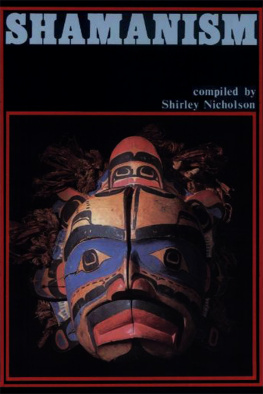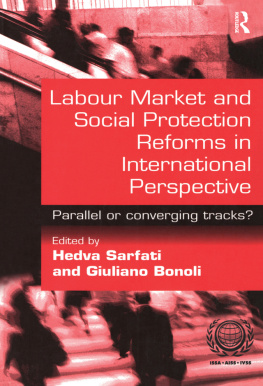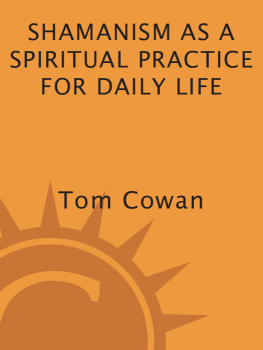This book is a publication of
Indiana University Press
Office of Scholarly Publishing
Herman B Wells Library 350
1320 East 10th Street
Bloomington, Indiana 47405 USA
iupress.org
2021 by Liora Sarfati
All rights reserved
No part of this book may be reproduced or utilized in any form or by any means, electronic or mechanical, including photocopying and recording, or by any information storage and retrieval system, without permission in writing from the publisher. The paper used in this publication meets the minimum requirements of the American National Standard for Information SciencesPermanence of Paper for Printed Library Materials, ANSI Z39.48-1992.
Manufactured in the United States of America
First printing 2021
Library of Congress Cataloging-in-Publication Data
Names: Sarfati, Liora, author.
Title: Contemporary Korean shamanism : from ritual to digital / Liora Sarfati.
Description: Bloomington, Indiana : Indiana University Press, [2021] | Includes bibliographical references and index.
Identifiers: LCCN 2020057370 (print) | LCCN 2020057371 (ebook) | ISBN 9780253057167 (hardback) | ISBN 9780253057174 (paperback) | ISBN 9780253057198 (ebook)
Subjects: LCSH: ShamanismKorea (South) | Religion and sociologyKorea (South)History21st century.
Classification: LCC BL2236.S5 S27 2021 (print) | LCC BL2236.S5 (ebook) | DDC 299.5/7dc23
LC record available at https://lccn.loc.gov/2020057370
LC ebook record available at https://lccn.loc.gov/2020057371
CONTENTS
Accessing Audiovisual Materials
Acknowledgments
Note on Transliteration
Introduction
1. Gods on Stage: A Mediated Performance
2. The Changing Image of Musok in Films
3. Agendas, Power, and Ideology in Museum Displays of Korean Shamanism
4. Getting to Know a Korean Shaman through Television Representations
5. Shamans Online: Internet Promotion of Musok Practitioners
Conclusion: From Ritual to the World Wide Web and Back
References
Index
AUDIOVISUAL MATERIALS ARE AVAILABLE FOR this volume and can be viewed online at https://purl.dlib.indiana.edu/iudl/media/n59q08c02r. Information for each individual entry follows.
Item 1. Korean Shaman (). Possession by the Spirit of Changgun, performed by Kim Nam-sun and S Kyng-uk. Seoul, 2007. Credit: Author and Shai Sarfati.
Item 2. Korean Shaman (Mudang ). Objects of Worship: Material Culture in Korean Shamanism, performed by Kim Nam-sun, S Kyng-uk, and Kang Ok-hui. Seoul, 2007. Credit: Author and Shai Sarfati.
Item 3. Korean Shaman (Mudang ). Writing Charms for Protection, performed by Sin Myng-gi. June 2007. Credit: Author and Shai Sarfati.
Item 4. Mansin Kim Nam-sun performing a tari-kut ritual to appease the dead. Seoul, August 2015. Credit: Author.
Item 5. Paksu Yi Sng-jae standing atop a sharp chaktu blade with a pig mounted on his back. Seoul, July 2014. Credit: Author.
WRITING THIS MONOGRAPH WAS FAR from the familiar imaginary scenario of a lone scholar sitting in a dark attic, typing frantically while surrounded by scattered papers and books. It required long stays in Korea, meeting various individuals, and participating in religious events and performances. Many people and organizations contributed to the process of researching, writing, and publishing this book. Without their kind help, this project would not have been possible. I was fortunate to encounter and benefit from many inspiring scholars and teachers throughout the process. A few influenced my academic interests and perspectives in particular. In Israel, Prof. Atay Citron offered my first mediated encounter with the worlds of shamanism, rituals, and performance studies and has been a constant source of support during my research and writing. Prof. Yaacov Raz, who introduced me to Buddhism, also shifted my dissertation fieldwork plans when he suggested many years ago that Korea would be a worthwhile location for the research of contemporary shamanism. Prof. Irit Averbuchs classes and her exciting stories about her own research experiences stimulated my initial interest in Asian folk religion, and her constant encouragement has steadily supported me in the shaky path of academic progress. Prof. Haim Hazan enhanced my understanding about the interlinks between culture and society. Prof. Yoram Bilu taught me about the subtle aspects of ecstatic religion, and Prof. Asaf Goldschmidt has been a kind and knowledgeable adviser throughout my academic path and a tireless source of support. His comments on parts of this book were extremely valuable. My colleagues in the Department of East Asian Studies at Tel Aviv University offered attentive ears to absorb my laments on the long process of manuscript publication, which is full of ups and downs.
During my years at Indiana University, Bloomington, many people in the departments of Folklore and East Asian Languages and Cultures provided me with indispensable training, advice, and inspiration. Prof. Richard Baumans thought-provoking comments and ideas always challenged my thinking and pushed my analysis further. The late Prof. Roger L. Janellis professionalism, preciseness, and knowledge helped me cross several narrow bridges that I faced in the research process. Prof. Yun Kyoim has been a great teacher of Korean and a colleague in studying Korean shamanism. Prof. Michael Robinson instructed me in using critical perspectives while exploring East Asian cultures and histories. Prof. Thomas Keirstead supported me in my studies of Japanese history. Prof. Henry Glassies ideas about artifacts were a formative influence, and I learned much from his virtuosity with words. Prof. Pravina Shuklas insights about museums and objects inspired my interest in a new discipline. Prof. Beverly Stoeltjes clear thinking enriched my ideas about performance and nationalism. Prof. Jason Baird Jacksons extensive knowledge of material culture theories and his constant faith in the importance of this research have been a true blessing. The late Prof. Nancy Abelmann of the University of Illinois, Urbana-Champaign, provided invaluable guidance before and after my dissertation fieldwork. Prof. Clark Sorensen of the University of Washington, Seattle, read and commented on the initial manuscript and provided me with lots of food for thought. Profs. John Lie and Theodore Yun Yoo taught me how to publish my first academic book in a junior faculty workshop sponsored by the Korea Foundation and the SSRC. Their clear thinking and sharp comments changed the manner in which I pursue my academic writing. Gilly Nadal refined the language and style of the book, and several anonymous readers took the time to read the manuscript and write detailed reviews that are greatly appreciated. Their efforts significantly helped shape the final manuscript. I deeply thank all these people for their kind hearts and their willingness to help this research project come to light.
During my fieldwork in Seoul, many people showed genuine hospitality and friendship by hosting me and sharing their knowledge. I am deeply indebted to all of them. Dr. Yang Jongsung (Chong-sng), who took me to my first shamanic rituals, has continued to acquaint me with the marvelous world of









